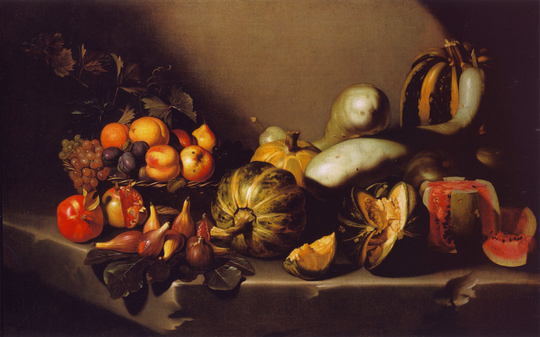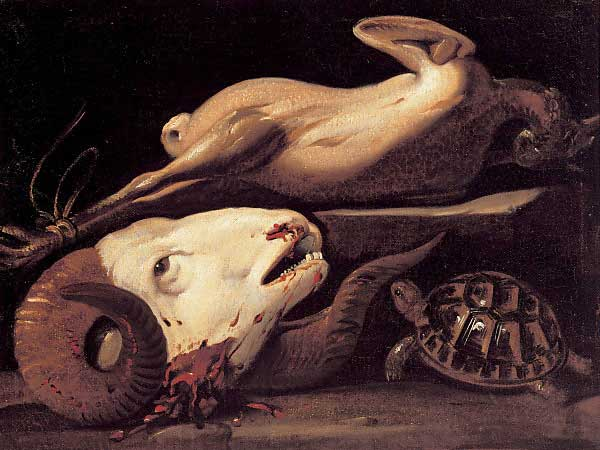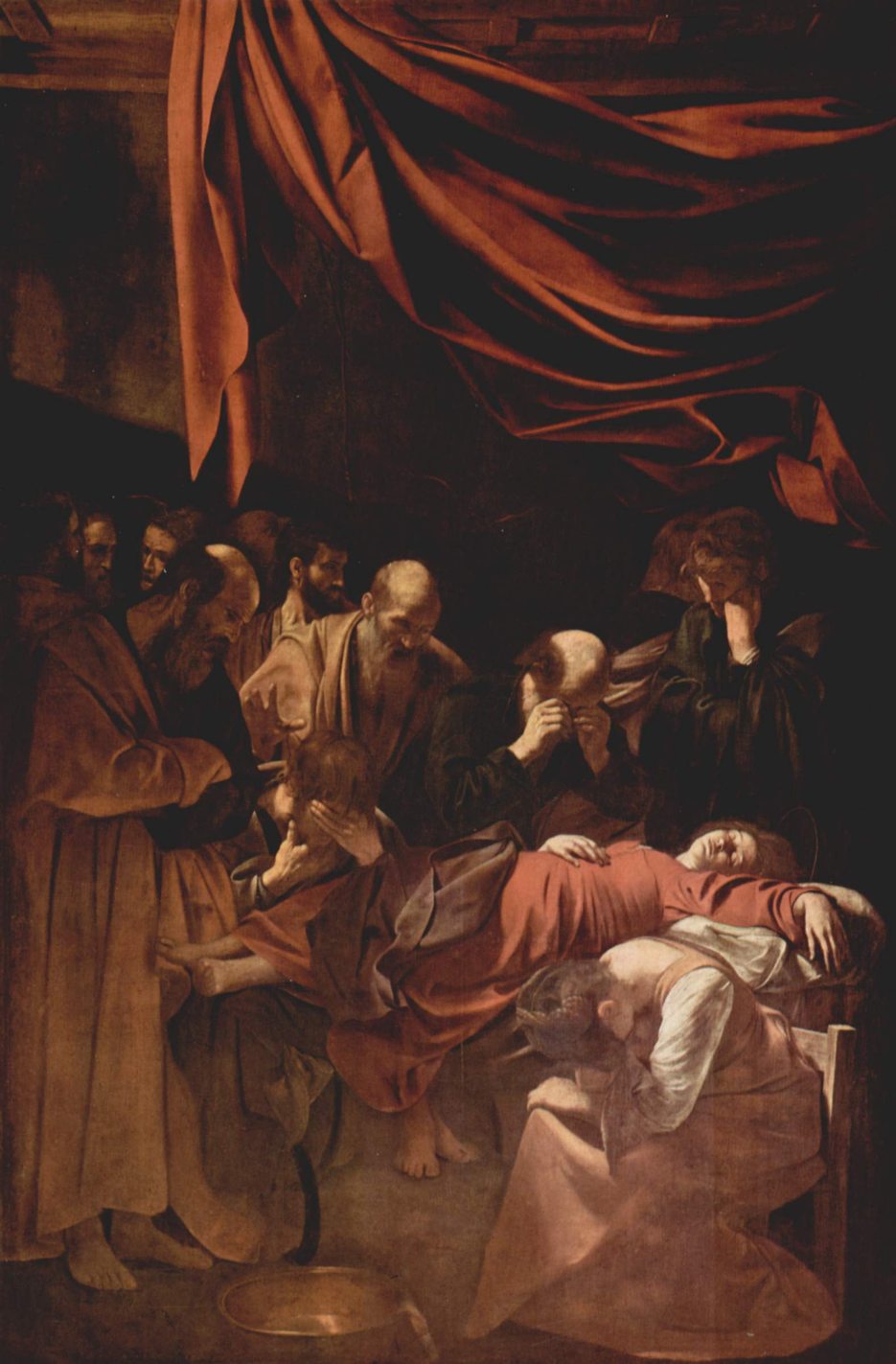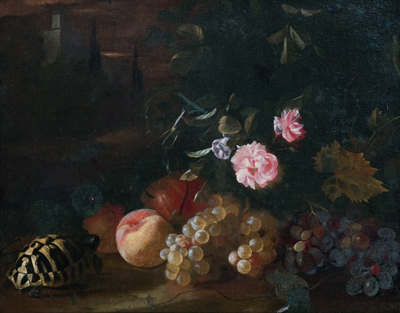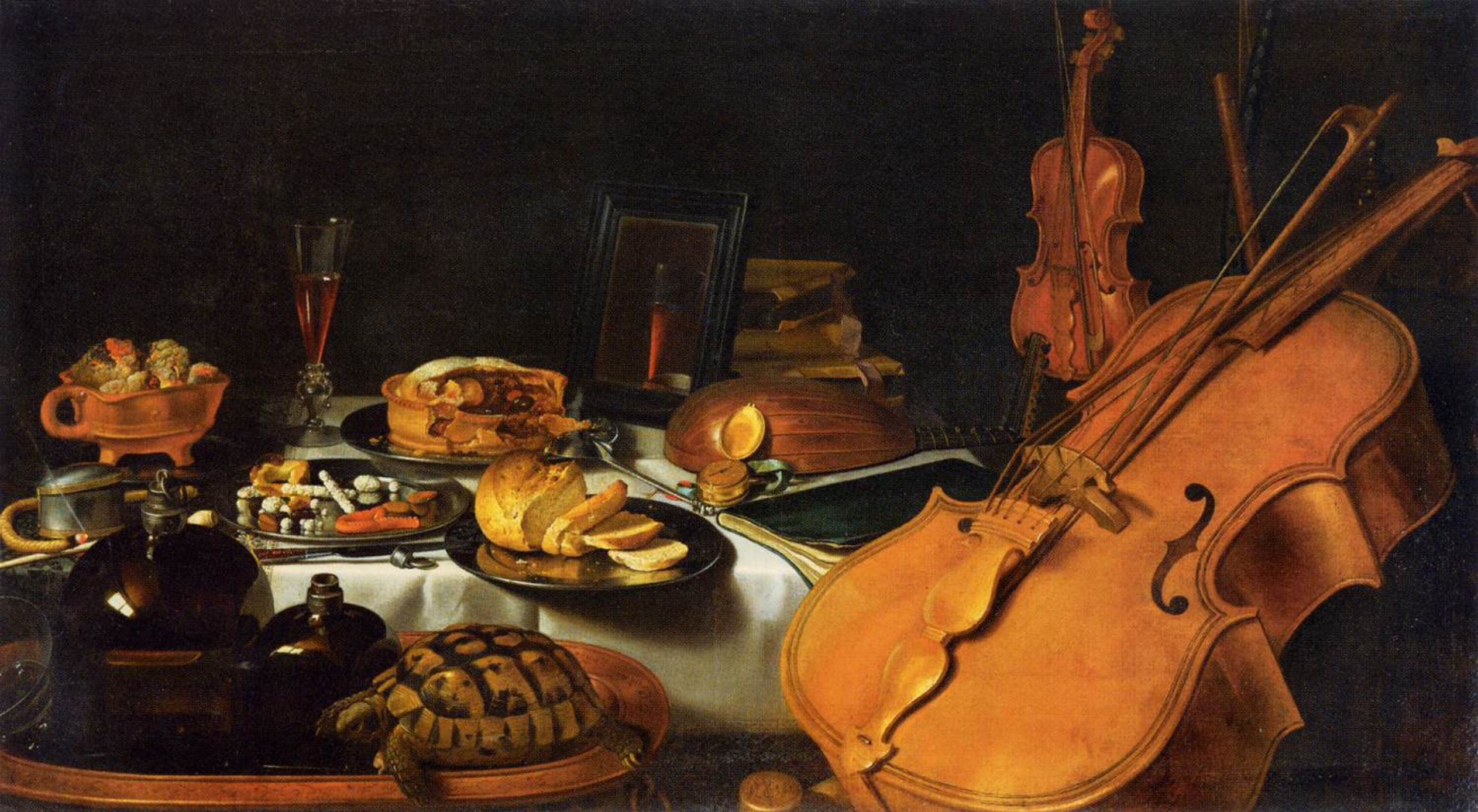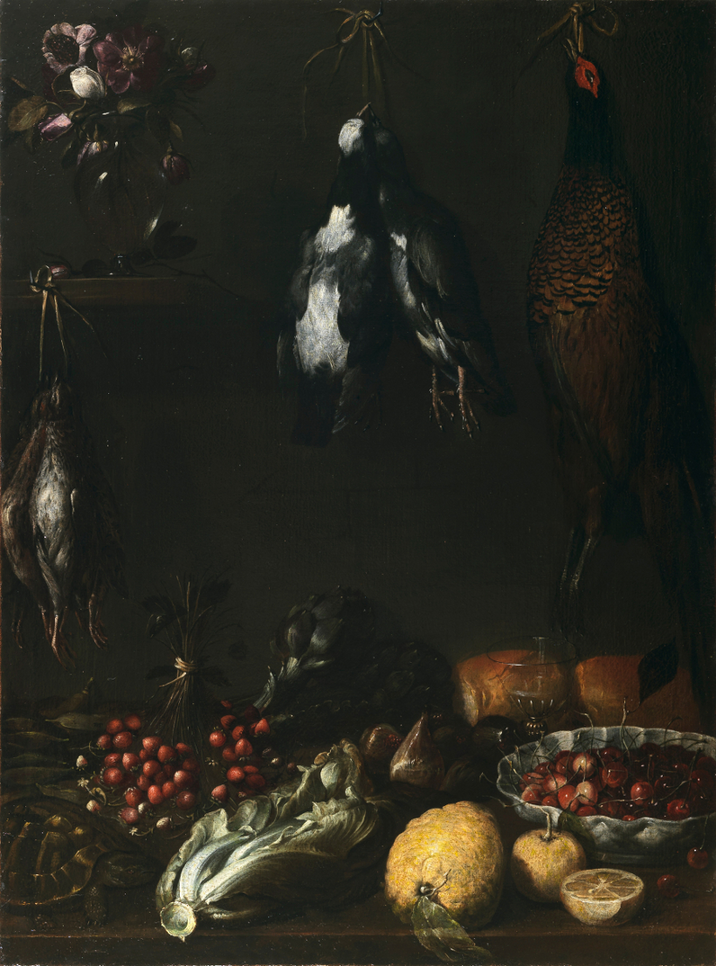No 2:
"The one-armed triptych"
I had this immediate association to what I see as the melancholy of gambling when first starting to think about games leading nowhere.
I have a frustration over what I consider to be a western, maybe especially Scandinavian way of considering grief as something to overcome. I have a need to change my inherent view on grief work towards a «being with» rather than an «overcoming». The loneliness of gambling and the action that seems never to be about winning, but about something completely different, (doing? feeling? I don’t know.) This ritual of repetition, almost religious, is something that feels very relevant.
We wanted to keep the form of the triptych with us in this process as something resonant with our sense of grief. The division into three parts within the one whole, the spectacle and theatrics of the traditional use in churches.
I made this little digital one-armed triptych as a model for a future 3D version made in wood by manuel. I used the image of "Triptych of the Entombment 1559-60" by Maerten van Heemskerck. The ceremonial imagery of Christ death, the public display of mourning.. It stuck with me on several levels that I am very eager to investigate further.
No1:
Holes
Composer John Andrew Wilhite had in 2019 an idea of creating musical games with tasks and rules that lead nowhere. This idea was inspired by the writings of linguist, visual artist and author manuel arturo abreu dealing with the loss of a dear friend to suicide. After experiencing loss myself in 2018 with a following complex mourning period lasting til this day, I had personal interest in, and a need for, exploring loss and mourning. This is how the project Losspuzzles came to be.
In the video above you can see John Andrew testing one of his games together with musicians Guoste and Espen at Montebøllo art centre in Oslo, Norway, December 2021. The video is recorded and edited by me and is called "Holes - a short study of December 3rd, 2021". I initially made this snippet for another project dealing with the folding and unfolding of focus in you surroundings, but became (as well as documentation of the working process) a part of my understandings of the fragmentations and holes, the rifts, loss can create.
No 4:
"Lament No 1" & "Lament No 2"
I got very interested in Caravaggio’s paintings as I started playing with the symbolism of the still life genre connected to grief. Whilst looking at Caravaggio’s still lifes, I got side tracked and started watching his imagery of mourning as well. «The death of the virgin» and «The entombment», which you can see here next to this text, stuck in my mind as resonant with a certain sensation of the physicality of mourning. I found the positions of the mourning people in the paintings and spent some time with them in my own body at the studio at Montebøllo, as you can see in the two videos called "Lament No 1" and "Lament No 2". I chose to explore the bodily sensations of my own interpretations of the imagery together with the music of my friend Aron Dahl, the artist behind the song played in both the lamentations called «Daddy issues». This song has been one of my favourites since I first heard it in 2018. It tells the complicated story between Aron and his dad who made a lot of choices during Aron's childhood that complicates Aron’s life. For me this song is a beautiful coming to terms with life’s many complex twists and turns, the loss of a parent figure, the sense of guilt, compassion and mourning.
Feel free to watch the lamentations seperatly or at the same time.
The Loss Puzzles resource archive
This exposition is an archive of resources, inspirations, and original materials used as windows and doors into open ended landscapes of mourning and loss.
This archive is ment to be a gathering of resources made to be used in the further artistic investigation named Loss Puzzles, a project with and by the artists John Andrew Wilhite, manuel arturo abreu, Espen Reinertsen, Guoste Tamulynaite, Javon Bennett and myself, Maja Hannisdal.
The Loss Puzzles resource archive is made and used by me, strongly influenced and inspired by, and entangeled with, the Loss Puzzles working group.
Feel free to watch and be with the materials separate, at the same time, with or without sound. The scattered texts are made up of thoughts shared between the artists in the working group, as well as explanations, titles, and drops of ideas regarding the different materials. It is not necessary to read the texts to get a sense of the archive, unless you feel extra curious.
No 8: Mourning song by the Mbuti tribe
The Mbuti tribe lives in the Ituri rainforest in the the northeast portion of the Democratic Republic of Congo. I found this recording through the journalist Kris Berwouts' YouTube channel where he writes that the role of this song is to reestablish the harmony disturbed by death, not only between the deceased and their family but also between the community and the universe of the forest. The agency of this ritual, the "doing" of this song feels to me like a key to sharing grief. It is also a beautiful piece of music in which I find a lot of inspiration.
No 6:
The turtle
As I worked on my trash still lifes I was told that the turtle is included in many still lifes (often as the only living thing) as a symbol of knowledge through touch, since the turtle understands it's life by experiencing through moving through and touching its surroundings. I don't know why it has been included in the style that is in french literally called "dead nature", as the only living being, but I found this so beautiful. I wish to understand, especially grief, through touch, so the turtle has stayed through this whole period of exploration as a mascot, a creature to look to for knowledge on how to be with, and deal with something as complex as mourning.
No 5:
"Boil song"
The image of boiling trash in manuel arturo abreu's video piece "Boil song" gives me strong associations to slow cooked casseroles where the smell slowly building up in the house holds a deep knowledge of time, both the measuring of time, but also time that has passed in sometimes unspoken history. History of the house, the kitchen, the country. The trash being brought in and given a new function without a clear goal resonates with my understanding of melancholy in mourning.
No 3:
Still life
In November last year I went out into the darkness of the Norwegian fall to film some trash with my friend and colleague, visual artist Amy Crowther. I asked Amy to join me because she is brilliant company, and as you get a lot of unwanted attention filming trash in the bushes alone after night fall I needed some courage and emotional support. I had an idea of recreating the feeling of Caravaggio's still lifes, full of drama and contrast, and with this aesthetic portray trash that people had left behind on the street and in the bushes of St.Hanshaugen in Oslo, Norway. My thought was to give what has been cast aside but not dissolved or disappeared, that which can’t be ignored in the long run without consequences, to give that time and focus as any other important and cherished thing. To thank Amy for accompanying me I brought some wine for us to enjoy during the shoot. So when I had arranged the frame just so, and lit it just right, we pushed rec and drank wine in silence together for two minutes per image. Afterwards we disposed of the trash in the trash can or recycling. As we did this it became a ritual of farewell, a burial, a beautiful moment of giving thanks to the purpose served by the item which had now reached its end in its current form. This became "The farewell score" as you can see in two different versions above this text.
One version is with a recording of the musical game tested out by John Andrew, Guoste and Espen, accompanied by different colours and blank screens serving as codes in the game. The other is the trash portraits with original sound. Feel free to watch them at the same time.
No 7:
"Selfie"
"Selfie" by Agostino Ferrente is a documentary that has been with me since I first saw it in 2019. Determined to document the aftermath of the police shooting and killing their friend, two teenage boys film their every day lives in selfie mode on their phones in an Italian town heavy with crime and economic difficulties.
I thought of this film when we started working on this project especially because of our times way of sharing life online. What does sharing life's important moments on the flat surface of the screen do to the experience of what you are sharing, versus sharing together in time and space? What is the resonance of the screen versus the resonance of the body, the room, the sound waves. What is the resonance of a picture being shared together in a shared space in realtime versus a picture shared on screen, online. What is the importance of bodies together?
I love this film because og its impressive way of showing something truly raw, but being presented something this real at a distance on a screen makes me think of the potential sacrifice this sharing might be for the boys who open their wound of grief for their friend to the world without feeling the feedback from their audience, in this case me.
Here is an outtake from an ongoing conversation between John Andrew, manuel and me, where manuel share their thoughts on screen, resonance, grief, time and quantum physics:
"Collective address vs promotion– are we really in a “post-Rosalind Krauss” moment (ie, have we overcome the narcissism of the video loop, or are we witnessing ‘new strains’ of it?)
I am reflecting on the flat surface. In relation to our project, I can draw connections to the consonance zone– agreement, compatibility, harmony. Yet, we can also look to the consonant itself as a site of constriction of vibrating air in the resonant cavity of the vocal space (versus the maximum resonance represented by the vocalic / vowel); thinking, finally, about articulating the resonant frequencies of ‘the room’ (or screen) by the way our experimental choreographies interact with its properties.
What does our bodily resonance do to our experience of grief-processes in contrast to visual resonance at a distance? What is the body’s responsibility as a mass in time and space in meeting with grief?
Right now this question partly drives my interest in cognitive linguistics, embodied cognition, and conceptual metaphor. Lera Boroditsky has some amazing experiments regarding visual perception versus conceptual metaphorical perception (ie, linguistic perception, so to speak). For example, she shows that subjects perceive words shown close together as similar in meaning, whereas they perceive words shown far apart as dissimilar in meaning; on the other hand, subjects report they perceive pictures shown close together as more different, whereas they perceive pictures shown far apart from each other as more similar.
I am also looking at quantum gravity physicist Carlo Rovelli’s work on time. It’s been blowing my mind. Entropy, which is crucial for human perception of state changes in a system, is kind of hmm… relative. That is to say, as a heuristic or story we tell ourselves (a story of linear grief?) regarding state change from order to disorder (from distinct zones in the system to heat death or undifferentiation), entropic thinking is actually a way of establishing this order → disorder sequence.
I’ll borrow from Rovelli here. If we have that classic physics demo with the box with red and green balls, we can tell the entropy story this way: the boxes start with all red ones on the left side, all green ones on the right side. Over time they start mixing up: order → disorder.
But consider someone who is fixated instead on the size of the balls, not the colors. At the beginning, when the colors are split into two distinct zones, the red group and green group each contain a mess of sizes. When the two colors all mix, it happens in a way that two size zones emerge: smaller balls on the left, larger balls on the right. Suddenly, our little linear sequence to them appears to be actually going from disorder → order, to this second observer.
Also, look into Emmy Noether who contributed hugely to the quantum field theory’s mathematical toolkit)."
